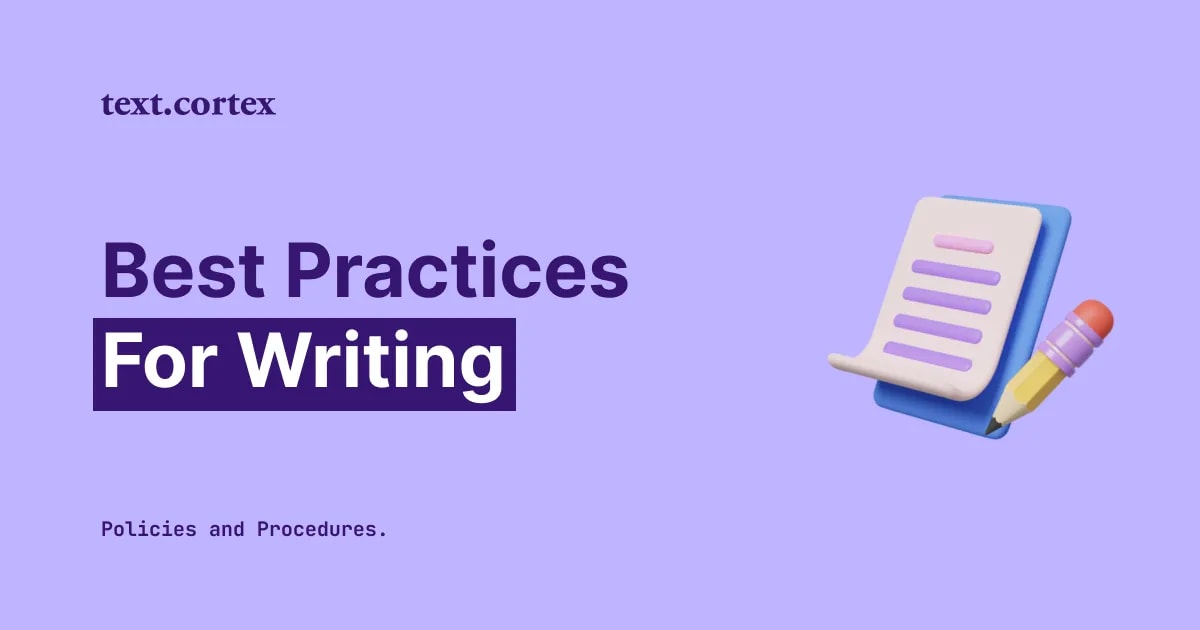If you've ever suspected that your employees don't understand the company's regulations, you're probably onto something.
If you see little uptake or execution of changes inside the organization, it's likely that many employees aren't complying with the policies as intended.
So, what to do about that?
To begin with, read this article and see which of these 7 best practices for writing policies and procedures you can integrate into your writing process.
Let’s start!
Why Is It Crucial to Write Policies and Procedures Properly?
Well-written policies and procedures guarantee consistency and clarity in the way activities are completed.
That leads to fewer employee misunderstandings and mistakes.
What else can you get?
✒️Better Conflict Resolution - By defining the proper actions and channels for addressing concerns inside the business, disagreements and disputes can be resolved much faster.
✒️Trustworthy Business Reputation - Properly written policies and procedures reflect well on the professionalism and integrity of the organization. That can improve its reputation internally and externally.
✒️Improved Productivity - If you provide your workers with clear rules and instructions, the workflow can be simplified.
✒️Protection Against Employee Claims - If an employee files a claim or dispute, you can use these policies and procedures as proof of the actions performed and the reasoning behind them.
What Is the Difference Between Policy and Procedure?
Even though best practices for writing policies and procedures can be applied to both, they have some core differences.
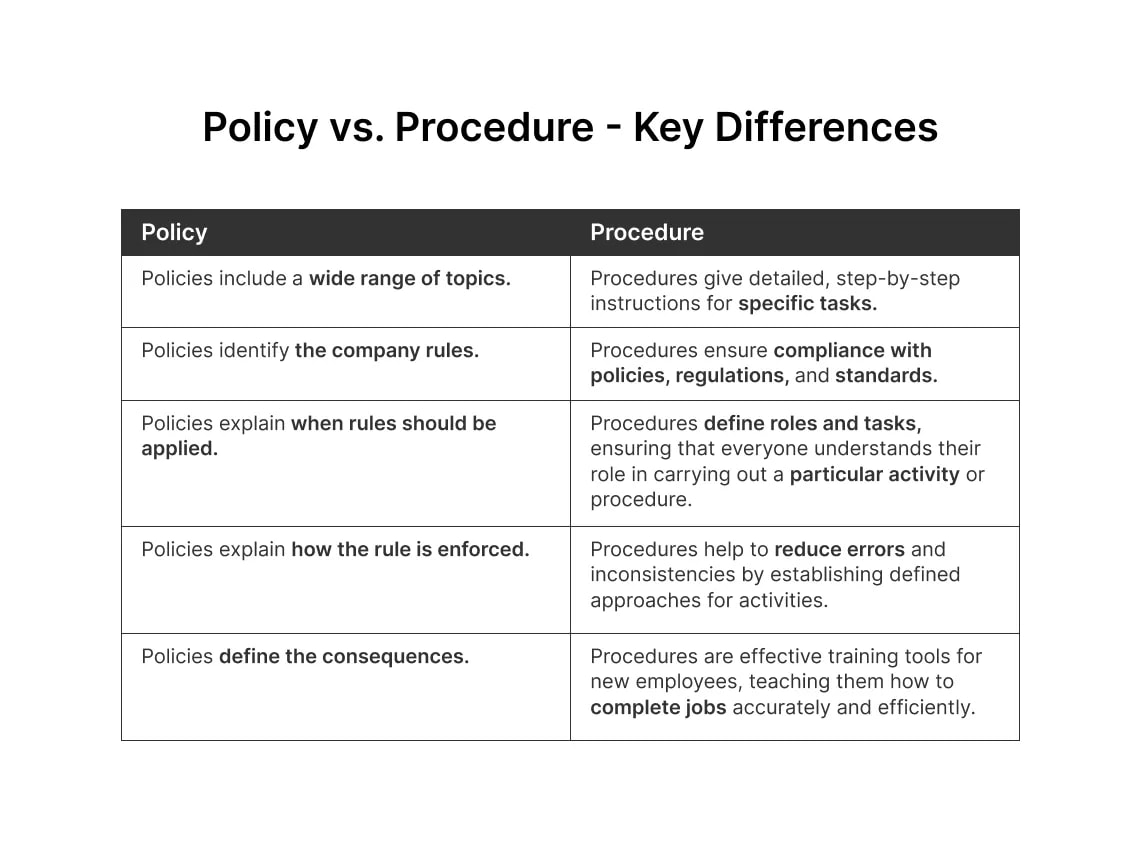
7 Best Practices for Writing Policies and Procedures
Let’s check out some of the best practices on how to correctly write policies and procedures.
1. Identify Problems and Find Their Solutions
A great start is to consider the issues that might occur if there were no policies. This can assist you in developing the actual policies and procedures.
If you identify these potential problems, you can better understand the areas where rules are needed most urgently and tailor the policy to address specific challenges.
Let’s say that you have a problem with inconsistent handling of customer complaints. Below, you can see how that problem affects policy creation and how it affects procedure creation.
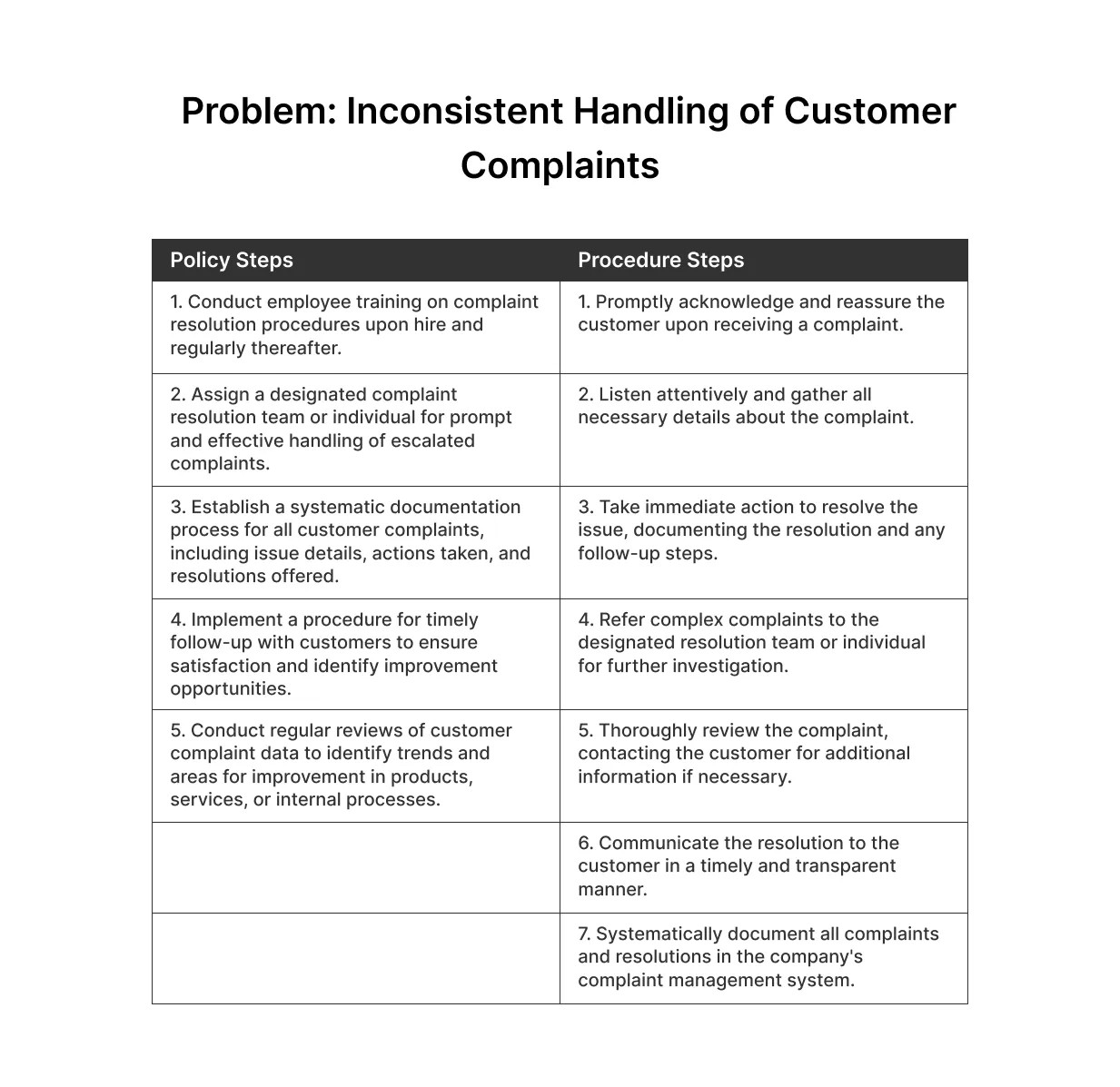
💡ProTip
In addition to assisting with your writing tasks, Textcortex’s feature Zeno Chat can address your queries! Simply ask a question, and you get the information you need ⚡
ZenoChat works on 10,000+ platforms including Notion, Google Docs, Gmail, Outlook and many more, which increases productivity and facilitates the writing of procedures.
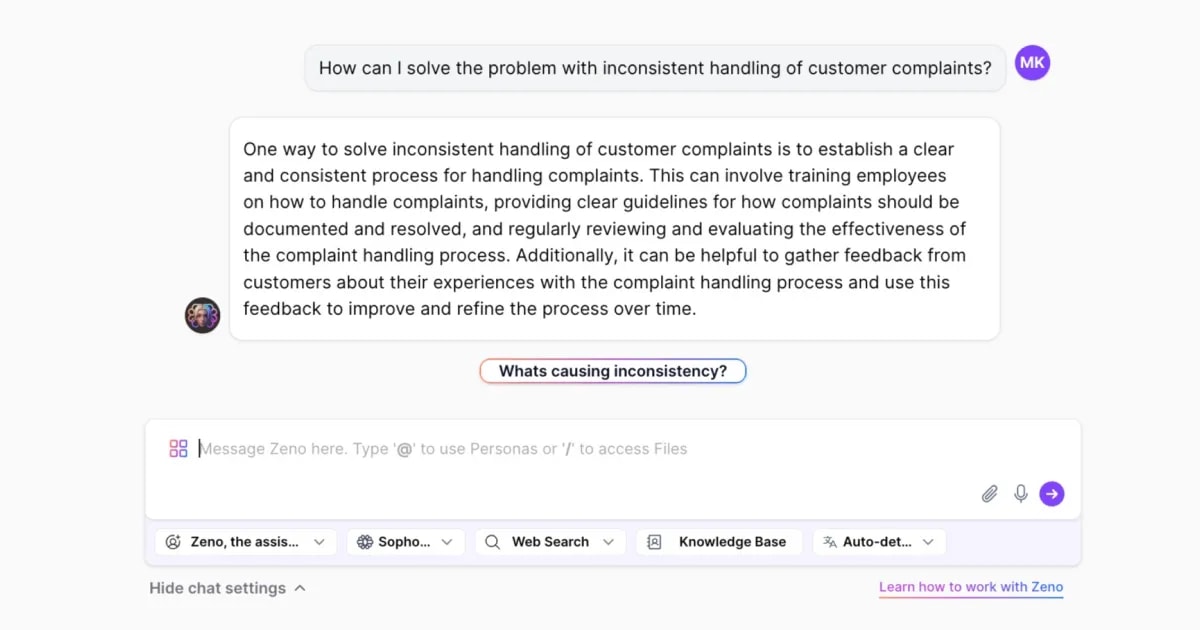
2. Create Categories
After identifying possible issues that policies and procedures should address, it is beneficial to categorize them for clarity and structure. Common categories may include safety, scheduling, conduct, salary, and vacation or leave.
Benefits? Here there are:
✔️Categories enable employees to quickly identify the type of policy or procedure they need
✔️Categorization helps you to fully cover all essential themes and areas inside the organization
✔️As the organization expands, having well-defined categories makes it easy to expand and add new policies and procedures while keeping the documentation system consistent and coherent
3. Make Them Clear
Make sure that your policies and procedures are clear. If you do that, employees will understand what is expected of them, eliminating confusion and the possibility of errors or misunderstandings. Furthermore, they:
✔️ Promote consistency in decision-making and behavior across the organization, showing fairness and equality among employees
✔️ Reduce legal risks by assuring compliance with regulations and standards. It can minimize the probability of legal challenges or penalties.
✔️ Increase transparency and responsibility, resulting in increased trust between employees and management
✔ Streamline operational efficiency by giving clear directions for completing tasks and successfully addressing challenges
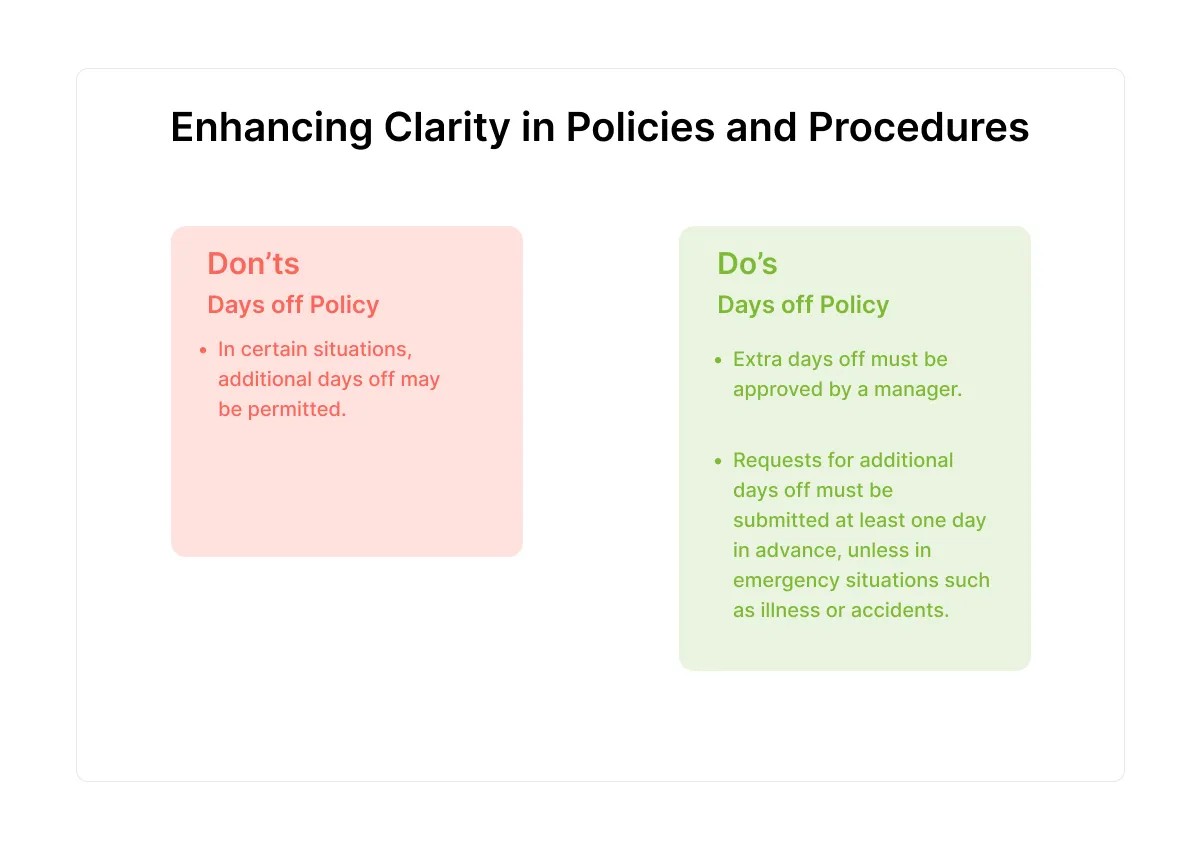
💡ProTip
TextCortex allows you to expand your ideas and sentences, creating far more detailed content. Simply input a sentence that requires further elaboration, and then copy the expanded version into your preferred writing space 👇
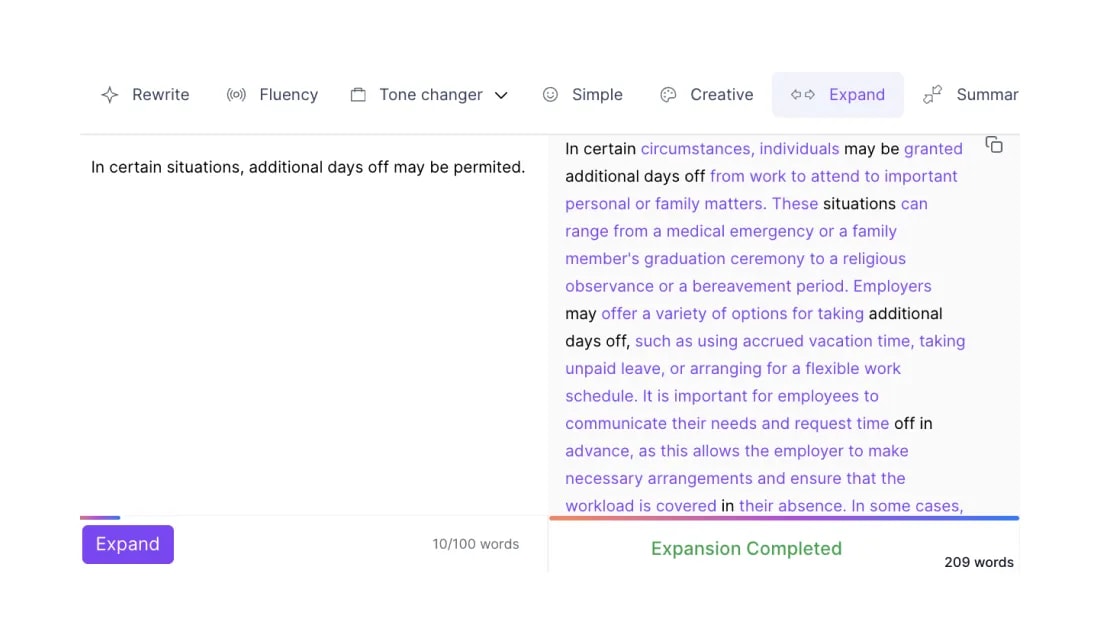
4. Use Simple Language
You want all your employees to read and understand the policies and procedures you are writing, right? If so, make sure they are easy to digest, whenever you can.
Try this approach:
.webp)
How can you benefit from using this technique?
✔️Employees can quickly grasp the information they need, resulting in smoother operations and fewer errors in completing activities described in policies and procedures.
✔️Employees can concentrate on their tasks rather than decoding complex or unclear instructions.
✔️When policies and procedures are simple to grasp, employees need less training time to learn and apply them, lowering training expenses for the firm.
✔️New employees can easily catch up with the organization's expectations and standards.
💡ProTip
If you're concerned about sounding overly formal or using complex language, TextCortex's Tone Changer feature is here to assist you! With over 10 tones for different occasions, you can effortlessly adjust your writing style to your intended audience and purpose 🚀
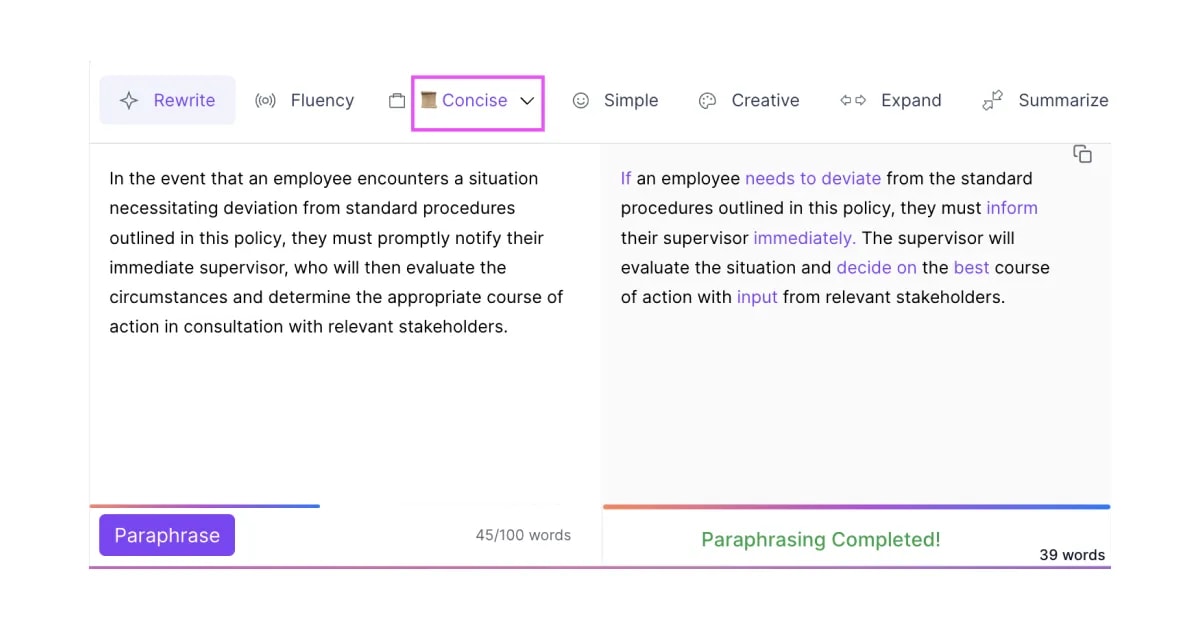
5. Keep Them Updated
It's crucial to keep your policies and procedures updated regularly. Here's why:
✔️Laws, regulations, and industry standards change over time. Updating your rules and procedures guarantees that you meet current legal obligations.
✔️Your business changes too, so certain policies and procedures may become outdated or irrelevant. Regular revisions ensure that your documentation accurately represents current practices and goals.
✔️Outdated policies and procedures can reduce production and efficiency. Keeping them up to date allows you to streamline procedures and reduce unnecessary steps.
✔️Keeping policies and procedures up to date ensures that staff is informed of the most recent requirements and standards.
6. Make Sure That You Use Consistent Format
Maintain consistent vocabulary, formatting, and style throughout your text. How to ensure consistency?
✔️Use the same font and size
✔️Implement headings
✔️Use bullet points
✔️Use tables where applicable
✔️Use images
All of these methods help to communicate difficult information more effectively, allowing employees to easily understand the topic. This clarity improves reading and understanding, allowing employees to absorb the intended information without any trouble.
7. Seek Feedback
You should ask your employees for feedback. If you do that, you can receive useful insights into how well policies and procedures are understood and implemented in practice.
This kind of feedback can:
✔️Help identify places where policies are unclear or confusing, procedures are inefficient, or certain policies are not properly addressing specific workplace challenges
✔️You can get suggestions or ideas on how to improve them
✔️You can improve your relationship with your coworkers by asking them to participate in writing policies and procedures
To Wrap Up
Maybe policies and procedures sound dull, but it is important to recognize them as instruments. What for? Well, for guiding behavior, increasing compliance, and building a positive workplace culture by focusing on clarity.
Luckily, there is a tool that can help you with this writing task and make it a lot easier for you.
Meet TextCortex!
How Can TextCortex Help You in Writing Policies and Procedures?
TextCorex isn't just for writing policies and procedures; it's an AI writing tool that helps you with numerous writing tasks. From crafting catchy marketing content to refining academic papers - with TextCoretex, you can do it all:
✏️Rewrite Sentences — TextCortex makes it simple to rewrite paragraphs or sentences, providing a new angle without compromising the original meaning.
🌪️Adjust Tone — Change the tone of your writing to fit your desired style, whether it's formal, casual, or professional.
💥Expand Ideas into Articles — Convert brief concepts into in-depth articles that give readers detailed information.
🔥Summarize Content —TextCortex can summarize long-form content into concise, educational summaries while retaining all relevant information.
🧠Establish Knowledge Base — Quickly organize articles or files and save time looking for them.
🌍Translate Content — Using AI-powered translation, you can quickly translate text into over 25 languages or write it in multiple languages directly.
TextCortex offers you three usage modes: a Chrome extension, a desktop application, and a web-based application. Additionally, new users are welcomed with 100 free creations upon registration.
Sign up today and put an end to your writing struggles!!

